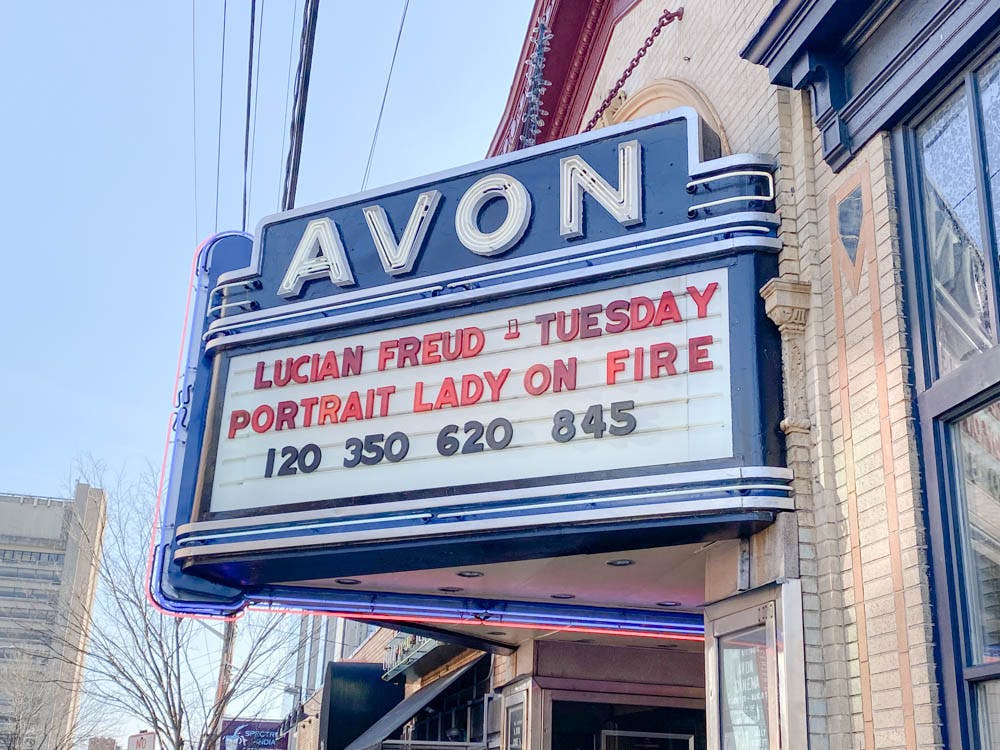Director Céline Sciamma explores and celebrates the tender but tragic love between two women in her fourth feature film, “Portrait of a Lady on Fire,” which opened at Avon Cinema last Friday, Feb. 28.
Marianne, a Parisian painter, and Héloïse, a former convent girl from an aristocratic family, meet on the isolated island of Brittany in 18th century France. The pair are brought together by Héloïse’s mother, who hires Marianne to paint a portrait of her daughter to send to a Milanese nobleman. If he approves of the painting, he and Héloïse are to be married.
But Héloïse has no desire to marry — indeed, she has already driven away a previous painter by refusing to pose for him. Marianne is introduced to Héloïse as a walking companion, but is told to study her new companion, painting Héloïse without her finding out.
In this pretext of secrecy, an “electric tension” arises between the two, as The Guardian’s film critic Marc Kermode puts it, and the thoughtful, intense nature of Marianne’s gaze elicits equally curious stares from Héloïse. They study each other in a tentative manner.
Until the guise of walking companion is cast off and Marianne’s profession is exposed, the film examines how observation can occur from two sides. While Marianne is devoted to recreating Héloïse’s likeness, studying her by day and painting from memory by night, Héloïse also watches her companion. Sciamma plays with the question of the artistic gaze: Who is the beholder? Who is beheld?
When Héloïse discovers Marianne’s real identity, she allows the artist to complete her portrait, despite having been deceived. As Marianne’s secret comes to life, we see her devotion redirected from the painting to its subject.
The first half of the film, and this love story, is characterized by a lack of background music that emphasizes this silently growing love. As an audience, much of our emotional response is directed by the score of the movie. Without any music, Marianne and Héloïse’s measured interactions are especially pronounced.
In an interview with IndieWire, Sciamma revealed that she purposefully crafted “a love story without music” to frustrate the viewer in the same way that the characters are frustrated by the lack of art in their isolated setting.
“The movie is also talking about the connection between love and art, and how love makes you love art,” she said. “I wanted the audience to be in the same position as the characters … so that was to put the viewer in the same physical condition and frustration regarding music, so when it occurs, it’s something.”
When it starts, the music is “something” indeed. Women gather around a bonfire singing, the soon to be lovers share a brief smile and Héloïse’s dress catches on fire — evoking an unshakable sense of ephemerality and revealing the beautiful, vivacious passion that Marianne and Héloïse share.
But the audience — and the couple — knows that it cannot last forever.
Their love is powerful, but it is not enough. A relationship between two young women cannot survive the patriarchal forces of 18th century French society. It’s worth remembering, after all, that the expectations of an arranged marriage are what brought the pair together in the first place.
Despite this, the film is “at once unsentimental in its realistic assessment of women’s circumstances and almost utopian in its celebration of the freedom that is nonetheless available to them,” reviewer A.O. Scott wrote in the New York Times. The all-female household and the isolation of their island home might dominate the film, but Héloïse and Marianne are still encased in the larger context of a masculine society.
The myth of Orpheus and Eurydice is a recurring motif in the film, making the devotion and loss that characterize Sciamma’s love story all the more prominent. Throughout, Sciamma shows us a fierce but gentle affection, a love burdened with the knowledge of future separation.
“It’s a lot about the present, the rise of desire, but it’s also about what’s left of a love story, what’s the memory of a love story,” Sciamma said in another interview with IndieWire. It is this knowledge of heartbreak that weighs over us that makes the end of the film particularly poignant, and Marianne’s parting words — “don’t regret, remember” — particularly powerful.
Love, as “Portrait of a Lady on Fire” shows us, is about the memory as much as the occasion itself. Through Marianne and Héloïse, Sciamma celebrates love in its more subtle, fleeting forms.





